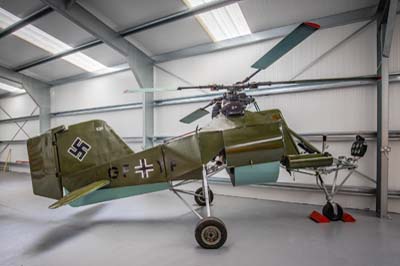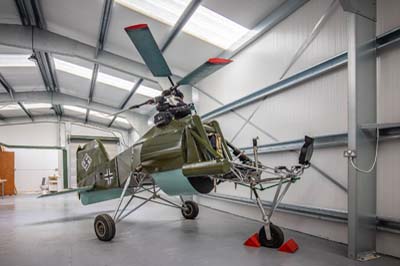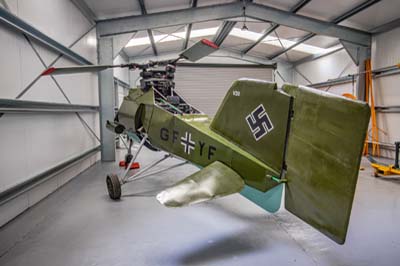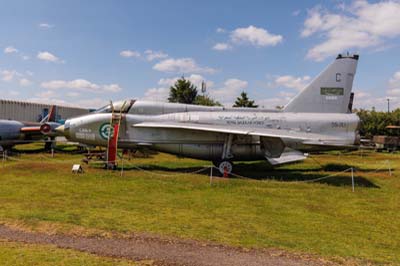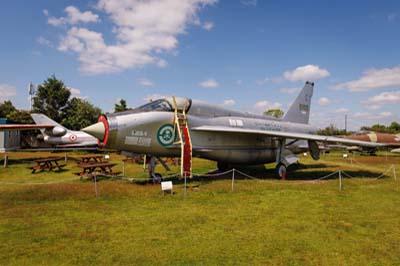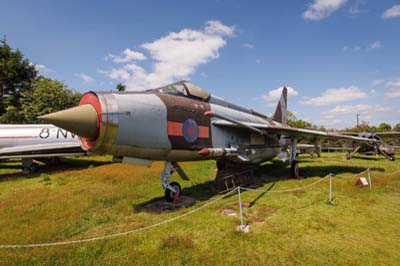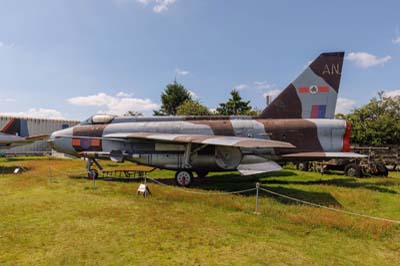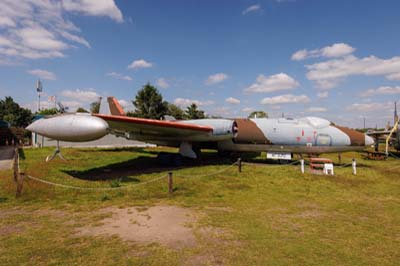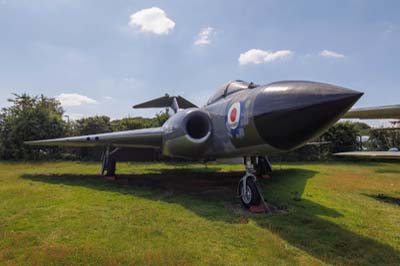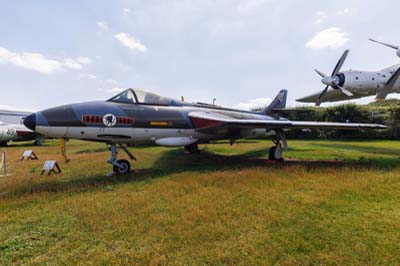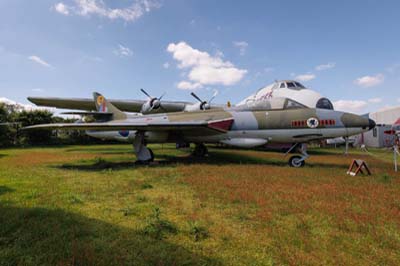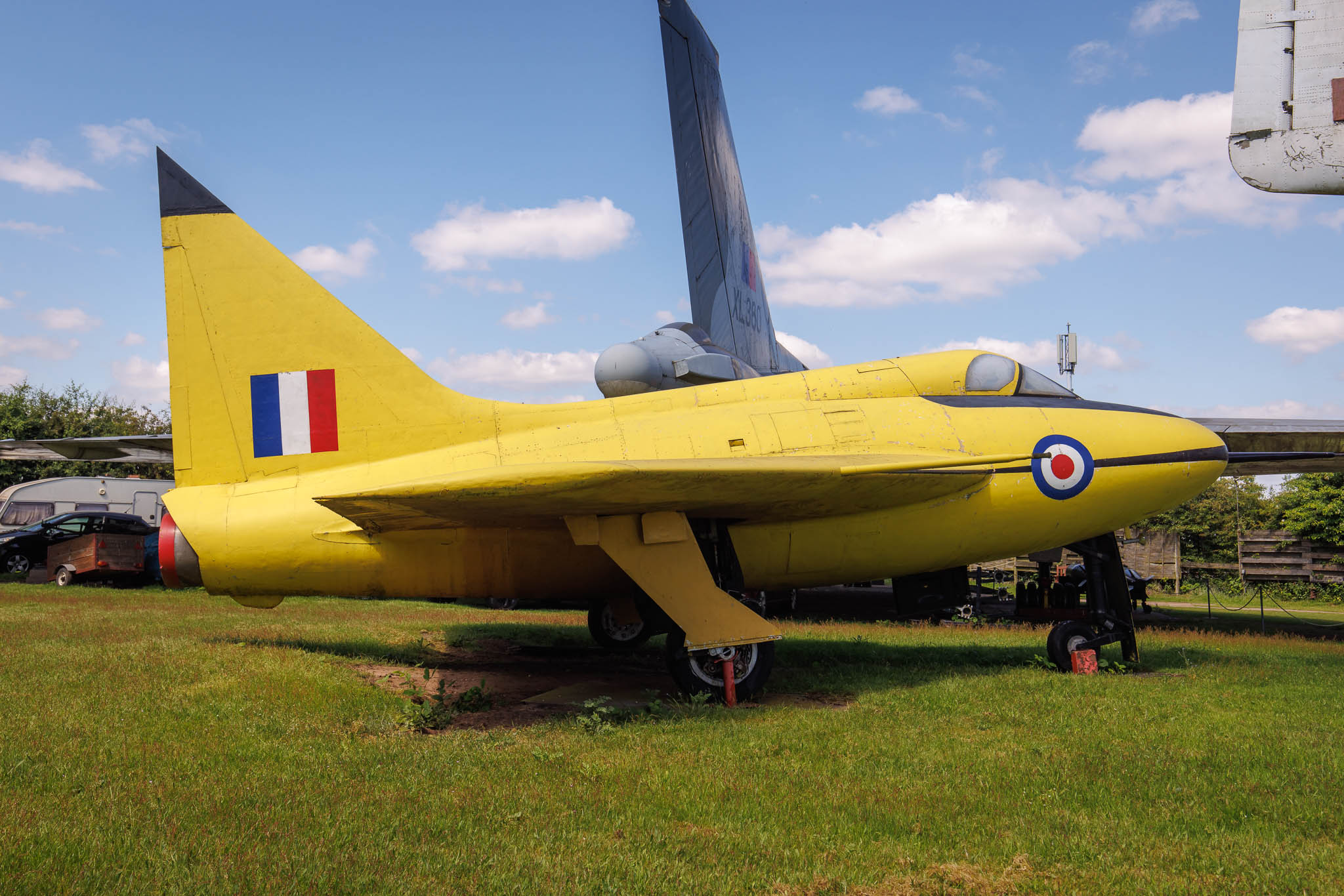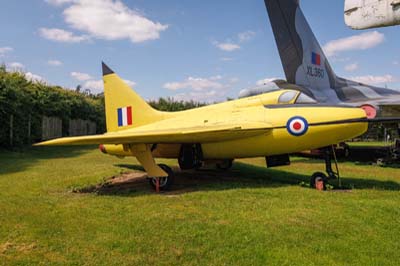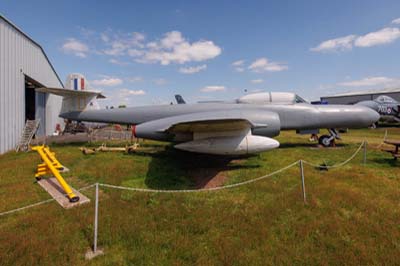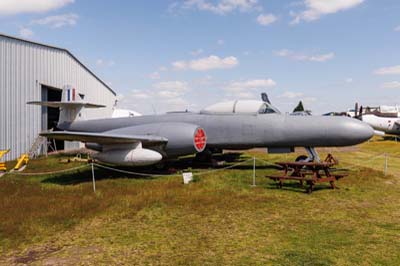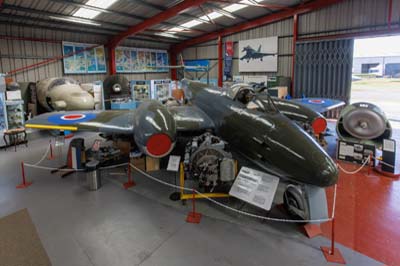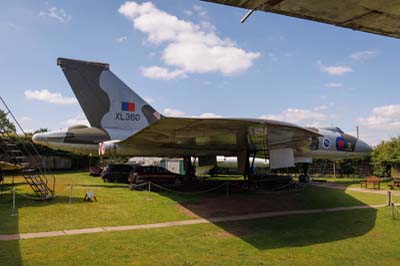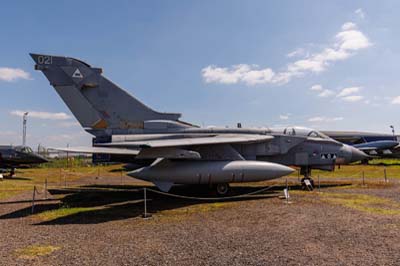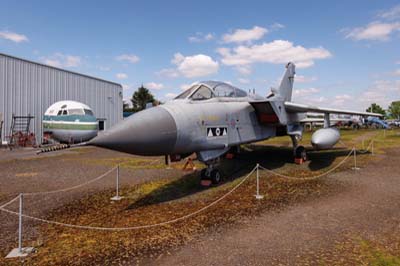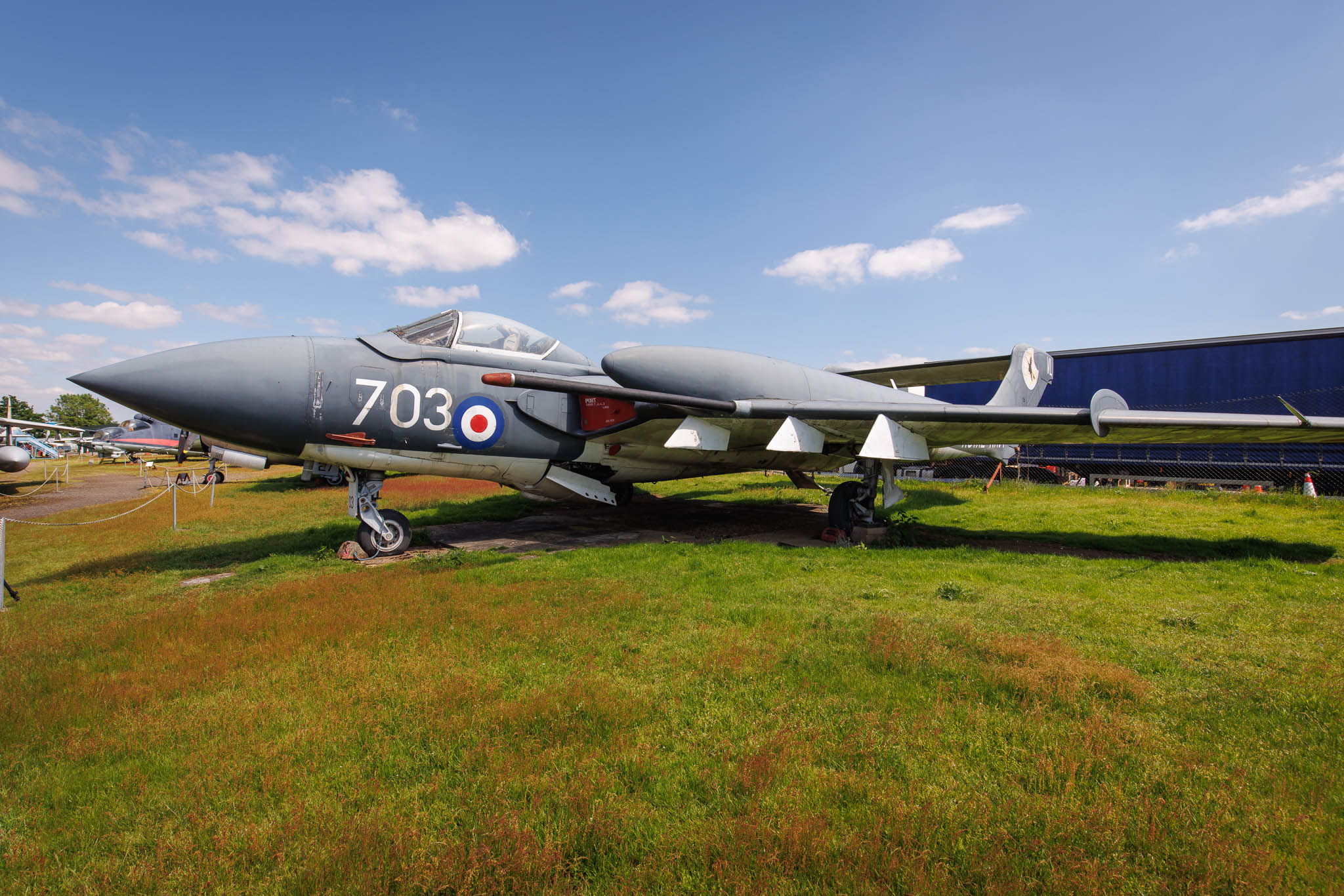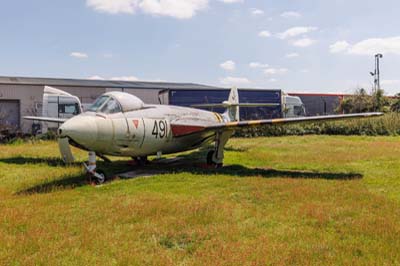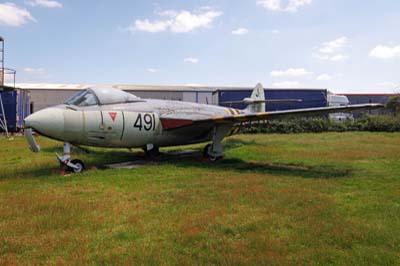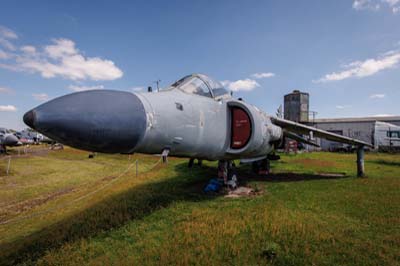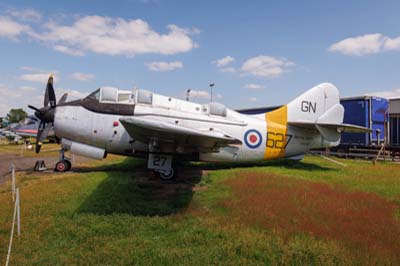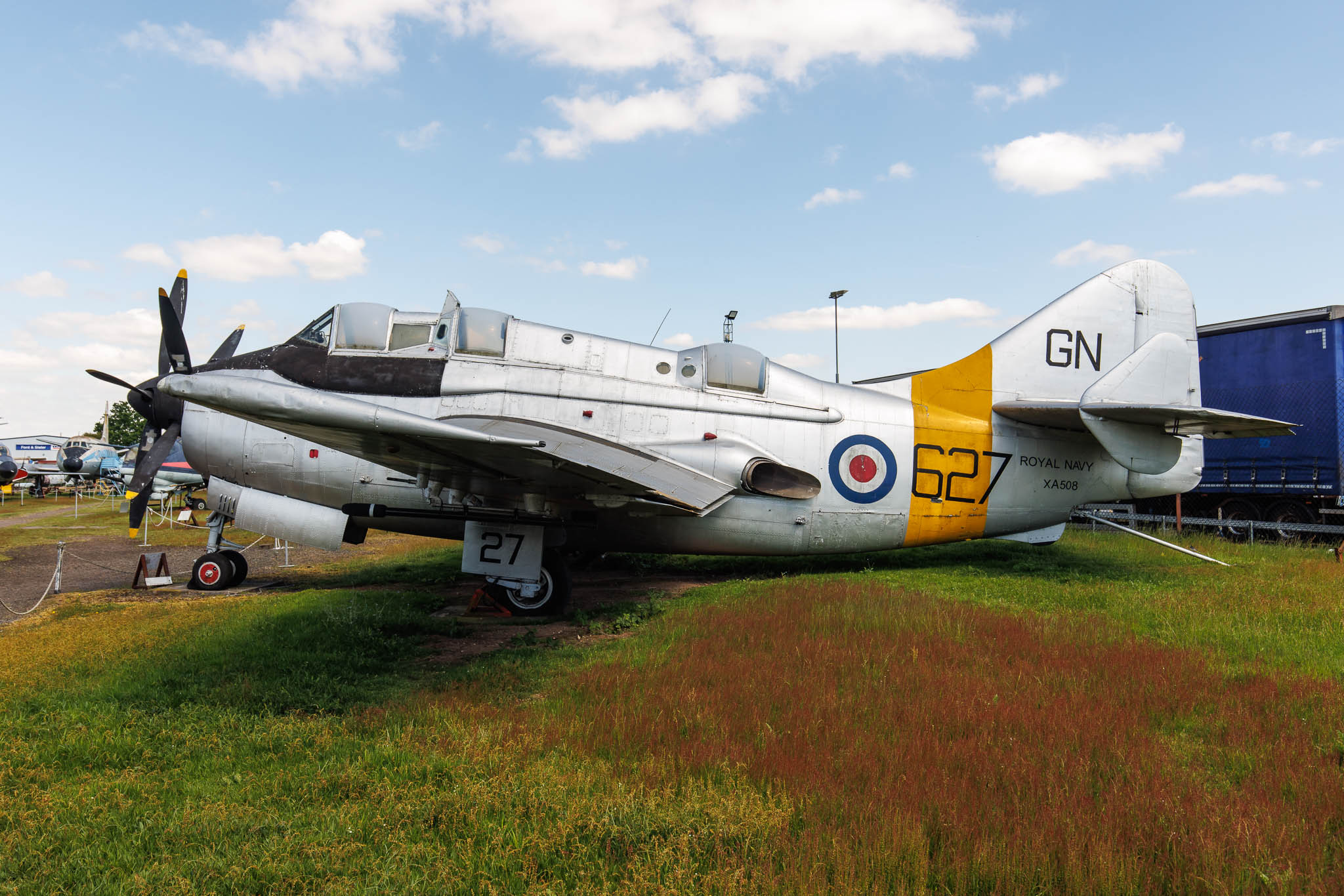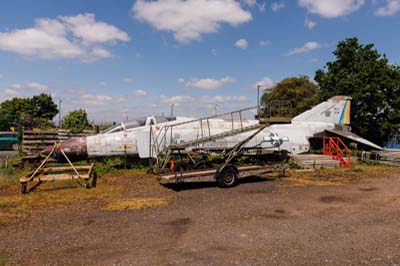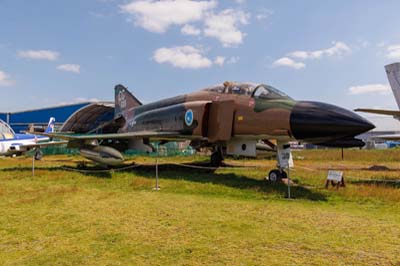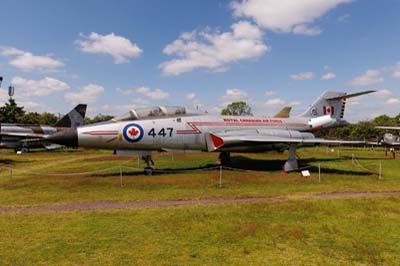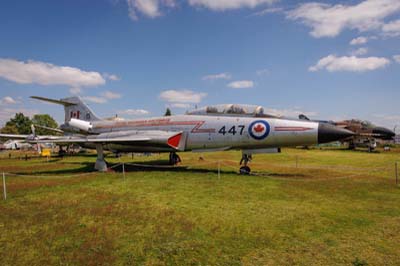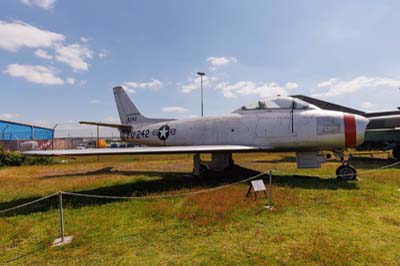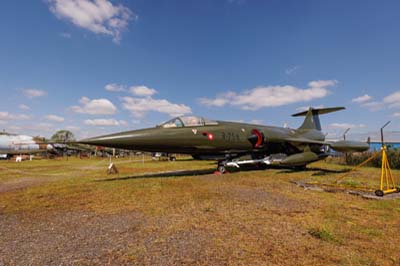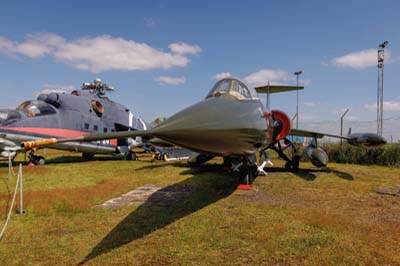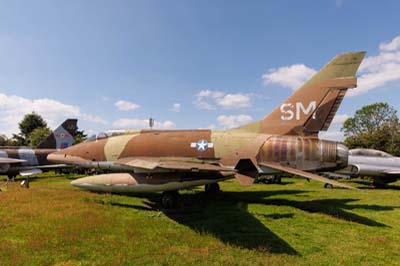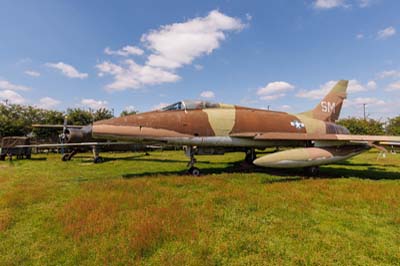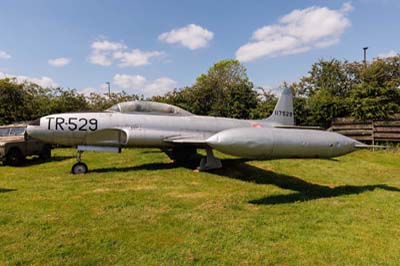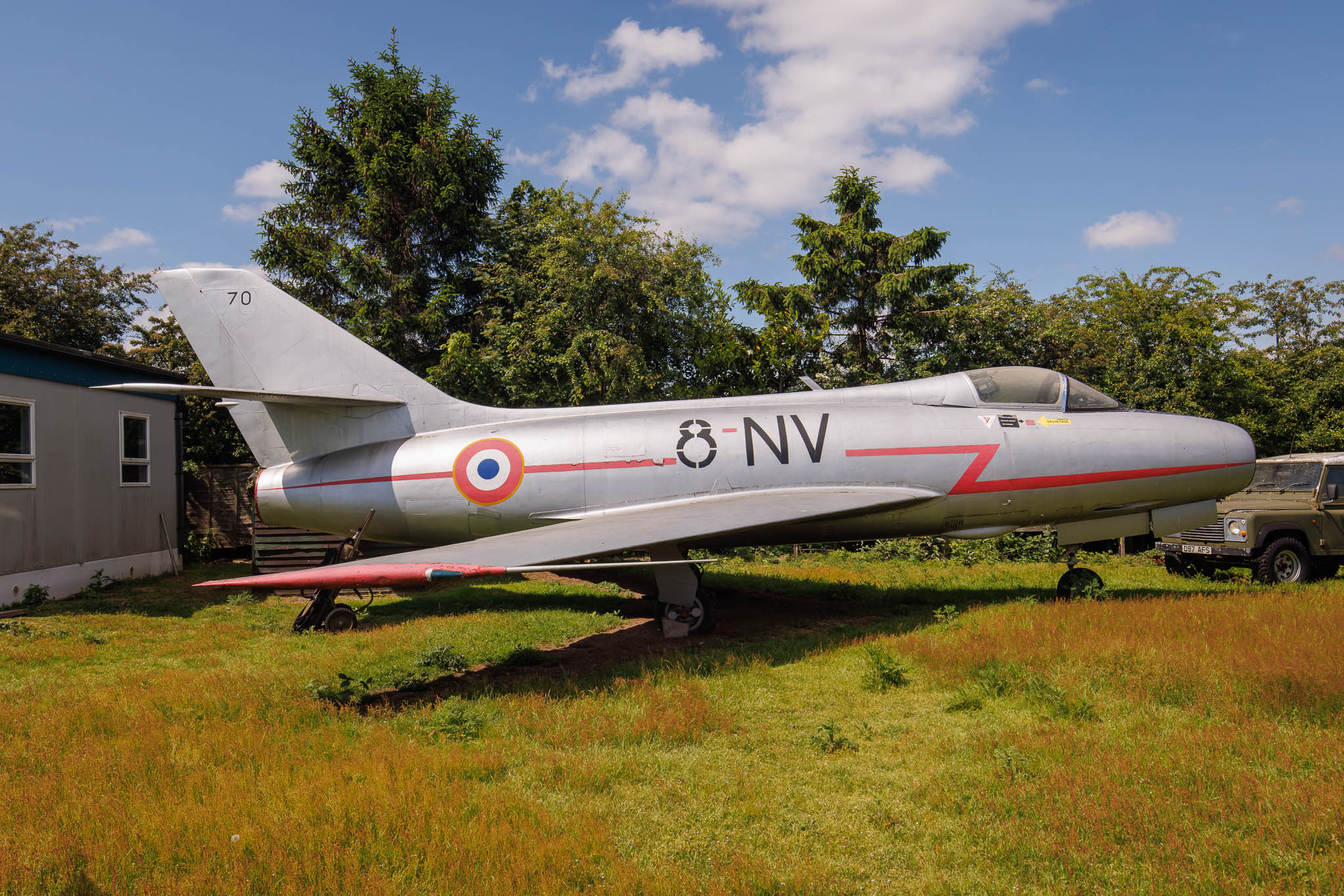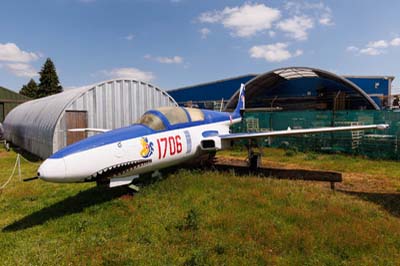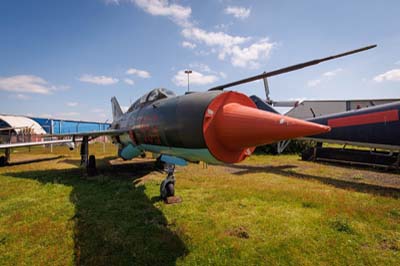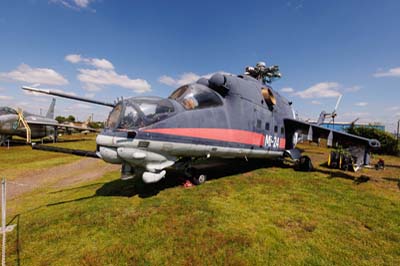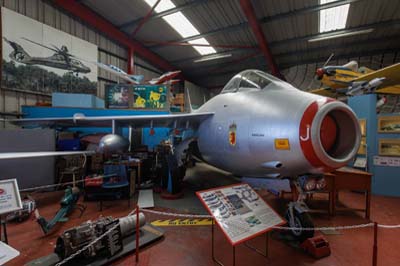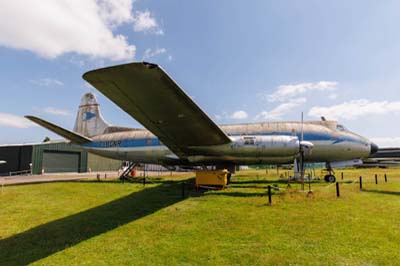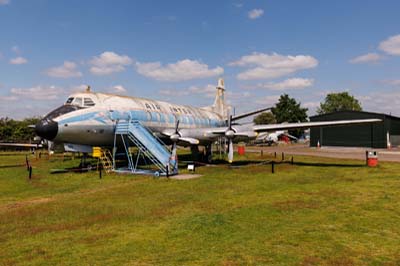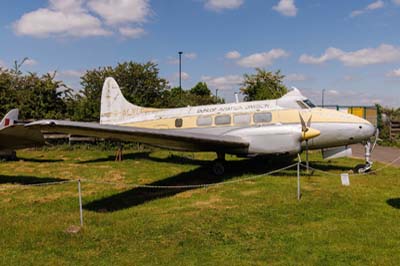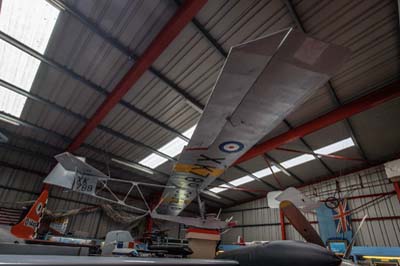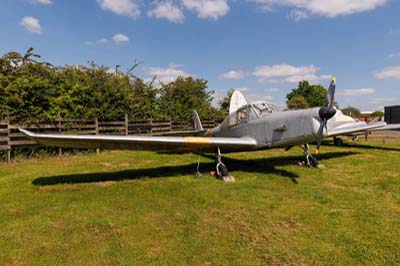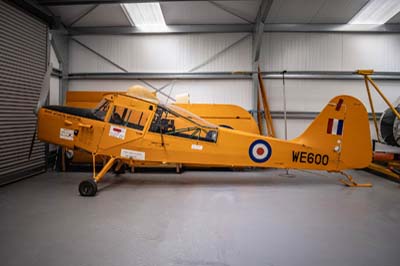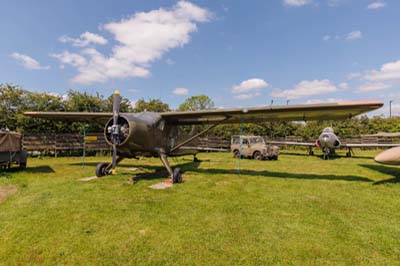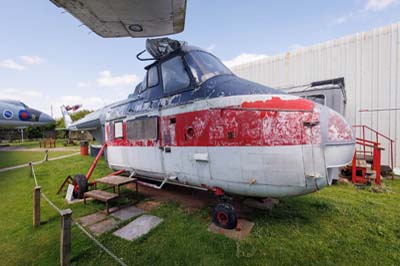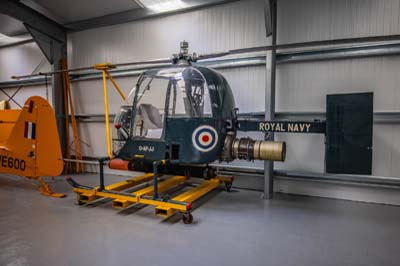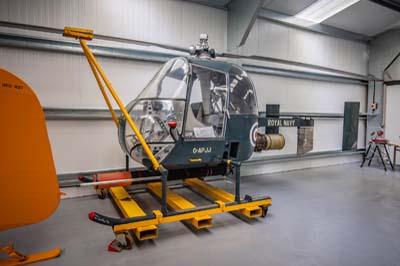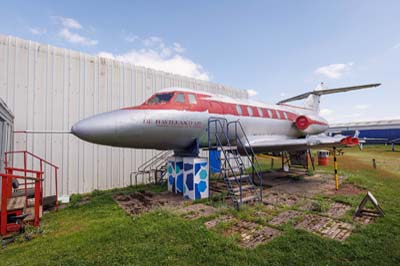Midland Air Museum
Baginton Airport, Coventry
May 2024
|
Midland Air Museum (MAM) at Coventry grew from the Midland Aircraft Preservation Society (MAPS) formed in 1967. These enthusiasts raised funds by selling books and photographs at air displays. In 1975 they secured a lease for a small plot of land at Coventry-Baginton airport the MAM was created. It became a Charitable Trust with Educational Charity status in 1979. Barry James, now Chairman of the Trustees, is proud to have acquired in 2008 the status of a Nationally Accredited Museum; "which is a recognition of our achievements over many years", he says. The museum has also been accredited by the Museums, Libraries and Archives Council which requires museums to demonstrate that they achieve clearly defined standards relating to governance and management, services for users, visitor facilities and collections management.
The museum site is tightly packed with over 40 complete aircraft and buildings. James accepts if they acquired a bigger site, there would be a tendency to fill it with more exhibits, but then the workload and museum running and maintenance costs will increase, with then have the challenge of getting more people through the door to fund the extra costs. Today, much of the workload is provided by volunteers a valuable but scarce resource. |
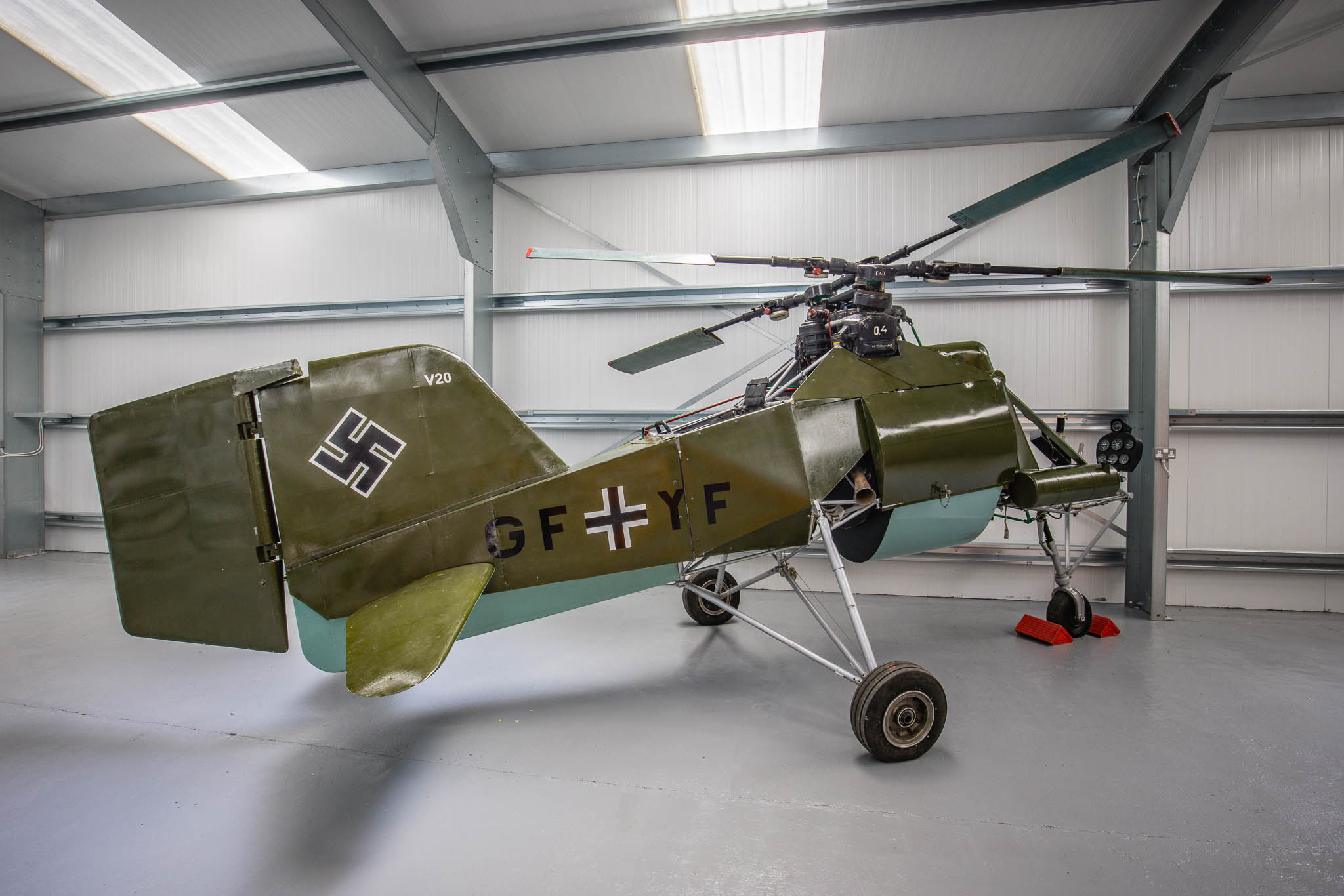 |
Flettner Fl 282V-10 Kolibri (Hummingbird) (28368). The Kolibri is a single-seat intermeshing rotor helicopter, or synchropter, produced by Anton Flettner, following a request by the German Navy in 1940. Its first flight was made on October 30, 1941 and deliveries commenced in 1942 in several variants, including a two-seat and with an open and enclosed cockpit. 30 prototypes were followed by 15 pre-production examples, are believed to have been built. Kolibri were operational in the Baltic, flown from the back of ships. Allied bombing of the Flettner factory ended any further production. Only three complete examples survived the war. One was captured by Soviet forces the other two by the Allies.
At the end of the war Col. Harold Watson, a former Wright Field test pilot, under Operation LUSTY (LUftwaffe Secret TechnologY) and known as Watson's "Whizzers" was tasked with collecting secret German technology. Along with many other advanced aircraft a Fl 282 V-23 Kolibri, were ferried to the United States using a loaned aircraft carrier, HMS Reaper, departing from Cherbourg, France. Some of the captured aircraft after testing were displayed around the country. Unfortunately, the Kolibri which was at one time with the National Museum of the United States Air Force at Dayton, Ohio and later stored at Sampson AFB was scrapped in around 1956 when the airbase closed.
The now sole surviving Kolibri was delivered to the Airborne Forces Experimental Establishment (AFEE) at RAF Beaulieu, Hampshire. In 1945 the AFEE was appointed as the official testing station for prototype helicopters and other rotary-wing aircraft. Later the Kolibri was moved to the Cranfield College of Aeronautics which was formed in 1946, becoming the Cranfield Institute of Technology in 1969, for use as a training airframe.
In the 1970s the former AFEE Kolibri was acquired by MAM. Received partly dismantled, it was missing an engine, its instruments and some panels had disappeared. Also, the rotor blades and been shortened. Its restoration was slow, punctuated with long periods in storage. In the early 1990s the blades were fitted to the rotor head; it could now be actuated by the control stick. Following some years on display, a team of restorers started to rebuild the back-end before it went back into storage as aging restorers had died. A new team was formed in 2019 and the restoration recontinued. An original seven-cylinder, 160hp Siemens-Halske Sh14 radial engine was found in the USA, and is now almost ready to be fitted to the airframe. An instrument panel produced using 3D printing technology has been fitted. Barry James researched the colours using original documentation on German instruments of that period, to make sure they were authentic. Barry James said, "Now our visitors can appreciate that there were helicopters in World War Two, even though their usage was limited." |
Left to right:
English Electric Lightning T.55 (55-713 re-serial ZF598) ex Royal Saudi Air Force.
English Electric Lightning F.6 (XR771 'AN') 5 Squadron. |
Left to right:
English Electric Canberra PR.3 (WF922).
Gloster Javelin FAW.5 (XA699).
Hawker Hunter F.6A (XF382 '15') 234 Squadron. |
| Boulton-Paul P.111A (VT935) experimental delta-winged aircraft of the 1950s. |
Left to right:
Boulton-Paul P.111A (VT935).
Armstrong Whitworth Meteor NF.14 (WS838) on loan from Cosford.
Gloster Meteor F.4(mod) (EE531). |
Left to right:
Avro Vulcan B.2 (XL360) 617 Squadron.
Panavia Tornado GR.4 (ZA452 '021') 2 Squadron. |
| de Havilland Sea Vixen FAW.2 (XN685 'VL-703') 890 NAS, Royal Navy. |
Left to right:
Hawker Sea Hawk FGA.6 (WV797 'J-491').
BAe Sea Harrier F/A2 (ZE694 'N-004') 801 NAS Royal Navy.
Fairey Gannet T.2 (XA508 'GN-627' previously displayed as BY-77'). |
| Fairey Gannet T.2 (XA508 'GN-627' previously displayed as BY-77'). |
Left to right:
McDonnell F-4C Phantom II (63-7414) 136 FIS.
McDonnell F-4C Phantom II (63-7699 'CG') 366 TFW.
McDonnell TF-101B Voodoo (56-0312 painted as 'RCAF 17447') ex USAF. |
Left to right:
North American F-86A Sabre (48-0242 'FU-242' registered N196B) ex USAF.
Lockheed F-104G Starfighter (R-756) ex Royal Danish Air Force. |
Left to right:
North American F-100D Super Sabre (42174 AdlA marked 54-2174 'SM') ex AdlA on loan from the USAF Museum.
Lockheed T-33A Shooting Star (17473 painted as '117529 TR-529') ex AdlA on loan from the USAF Museum. |
| Dassault Mystere IVA (70 '8-NV') ex AdlA. |
Left to right:
PZL TS-11 100bis (408 painted as '1706') ex Polish Air Force.
Mikoyan-Gurevich MiG-21 SPS-K 'Fishbed-F' (959) ex East German Air Force (DDR).
Mil Mi-24D 'Hind' (3532464505029 '06 Red') ex Soviet Air Force.
SAAB J 29F Tunnan (29640 'J') ex Swedish Air Force. |
Left to right:
Vickers Viscount 708 (F-BGNR) in Air Inter livery.
de Havilland DH.104 Dove 2 (G-ALCU) later painted as 'G-ALVD'. |
Left to right:
Slingsby Grasshopper TX.1 (XK789).
Percival Prentice T.1 (VS623).
Auster T.7 (WE600).
de Havilland Canada U-6A Beaver (58-1062). |
Left to right:
Westland WS-55 Whirlwind 3 (G-APWN).
Fairey Ultralight (G-APJJ) used by Fairey Aviation. Built in 1957.
Hawker Siddeley HS.125 Series 1 (G-ARYB) 2nd prototype. |

